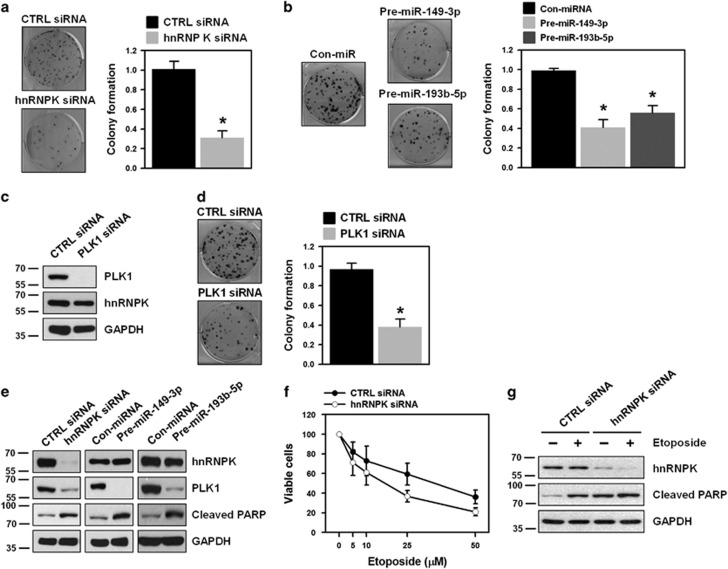Figure 6.
PLK1 regulation through interplay between hnRNPK and miRNAs is implicated in clonogenicity and drug resistance. HeLa cells were transfected with hnRNPK siRNA (a), miRNA mimics (pre-miR-149-3p and miR-193b-5p) (b), or PLK1 siRNA (c–d). After 48 h post-transfection, cells were resuspended into six-well plates and cultured for 2 weeks. Representative images are shown and clonogenic abilities were determined by counting the number of colonies. (e) To determine whether downregulation of PLK1 induces apoptotic cell death, HeLa cells were transfected with hnRNPK siRNA or miRNA mimics (pre-miR-149-3p and miR-193b-5p). The level of hnRNPK, PLK1, and cleaved PARP was assessed by western blot. (f) HeLa cells were transfected with control or hnRNPK-specific siRNA. Transfected cells were resuspended into 96-well plates and treated with different concentrations of etoposide. After incubation for 48 h, cell viability was determined by the MTS cell proliferation assay. (g) To test whether knockdown of hnRNPK sensitized cancer cells to etoposide treatment, HeLa cells were transfected with control or hnRNPK siRNA. Transfected cells were resuspended into 96-well plates and treated with 10 μM etoposide for 48 h. The level of hnRNPK and cleaved PARP was assessed by western blot. All experiments were performed more than three times and data represent mean±S.D.

